Event Summary
Place RESI: We need more than a plan to build houses
Cllr Sue Derbyshire, leader of Stockport Council and Greater Manchester Combined Authority’s planning lead, focused on issues of viability when speaking at the Place RESI conference, saying: “There are 47,000 units that have permission in Greater Manchester and haven’t been progressed, and we need to ask why.”
She warned: “A plan doesn’t produce houses, even a plan that includes lots of sites.”
 Derbyshire provided an update on progress on the creation of the Greater Manchester Spatial Framework, and also gave developers an insight into the struggles of councillors working within local authority planning committees.
Derbyshire provided an update on progress on the creation of the Greater Manchester Spatial Framework, and also gave developers an insight into the struggles of councillors working within local authority planning committees.
Place RESI was sponsored by PPS Group, Hill Dickinson, and Edward Mellor Auction.
See below for images from Place RESI and link to slides
“Quite often a planning application is dumped on a community and the first they hear about it is a local authority sending them a letter saying that ‘there’s a plan’, and then it becomes the local authority’s fault,” Derbyshire said. “I think it’s getting better, but developers will stand behind the local authority, let us do the consultation, let us do the report, and then go ‘well, you weren’t very supportive’, if the community becomes very agitated.
“So if you don’t do the work to try and sell what you’re doing, don’t blame the planning committee if they’re not going to do it for you, if their voters are shouting at them. If you don’t give them the details, you don’t give them the ammunition, all a councillor is hearing will be from the objectors.”
The Greater Manchester Spatial Framework is a statutory plan outlining the city region’s housing and employment strategy for the next 20 years. The results of the latest stage of consultation were published last week, and according to Derbyshire, a draft is due in October.
“Our ambition for Greater Manchester is a growth and reform ambition, and we’re looking at how our existing and new residents can benefit from that growth,” she said.
Derbyshire said that as part of ongoing devolution negotiations, Manchester was looking to secure a deal from central Government to provide gap funding, for developers that are still struggling to bring sites forward. Derbyshire stressed that it was important to understand why some sites had stalled. In particular, she warned that the creation of a brownfield register as proposed by the Government would not be the easy solution many hoped for.
“I fear the brownfield register will just be a long list of sites that aren’t viable, which are being left to the market,” she said.
Market appeal
Speaking alongside Derbyshire at Place RESI was Cllr Sean Anstee, leader of Trafford Council; Sam Stafford, strategic land director at Barratt Developents; Nick Lee, managing director of NJL Consulting; Rebecca Eatwell, deputy managing director of PPS Group; and Grant Anderson, head of planning at Hill Dickinson.
Anderson detailed some recent changes to the planning system, such as the introduction of ‘Permission in Principle’, part of what he described as “an age of planning reform”.
PIP was introduced in the Housing & Planning Bill 2015, and allows for outline planning permission to be granted automatically for smaller developments, if the application is on land already allocated for development.
According to Anderson, PIP is ideal for schemes of around 10 units, where the housebuilder can avoid racking up additional costs for extra reports. The wider justification for councils is that it can then avoid sites being questioned once they’ve been earmarked for development in Local or Neighbourhood Plans.
The introduction of PIP is part of the Government’s drive to build on brownfield sites, and works in conjunction with the proposed brownfield register. However, Anderson was in agreement with Derbyshire, and stressed that a list of brownfield sites in itself would not be enough to get houses built.
“Councils could use the brownfield register to resist greenfield applications, and we could still need those sites.” Anderson said. “Brownfield sites haven’t been undeveloped just because of a technicality. The site has to appeal to the market, people have to want to live there, and lots of sites that will be on the register available for development haven’t been brought forward for those reasons.”
Planning for the future
Eatwell of PPS gave an overview of the politics around housebuilding, predicting that housing would be likely to remain high up the political agenda on the approach to local elections.
While planning approvals were on the up, with the House Builders Federation recording an increase in the approvals in the North by 17% in the last quarter, Eatwell showed that local councils were still inconsistent with consents, based on the dominant political party.
“Traditionally, conservative councils are less likely to approve housing,” she said. “There’s a drive for more houses nationally, with a target of 1 million homes by 2020, but there’s a disconnect between national policy and what is happening in the local community.”
To compare two North West councils, Eatwell said that Conservative-controlled Cheshire East approved 16 out of 34 residential applications in 2015, while Labour-leaning Liverpool signed-off all 74 applications.
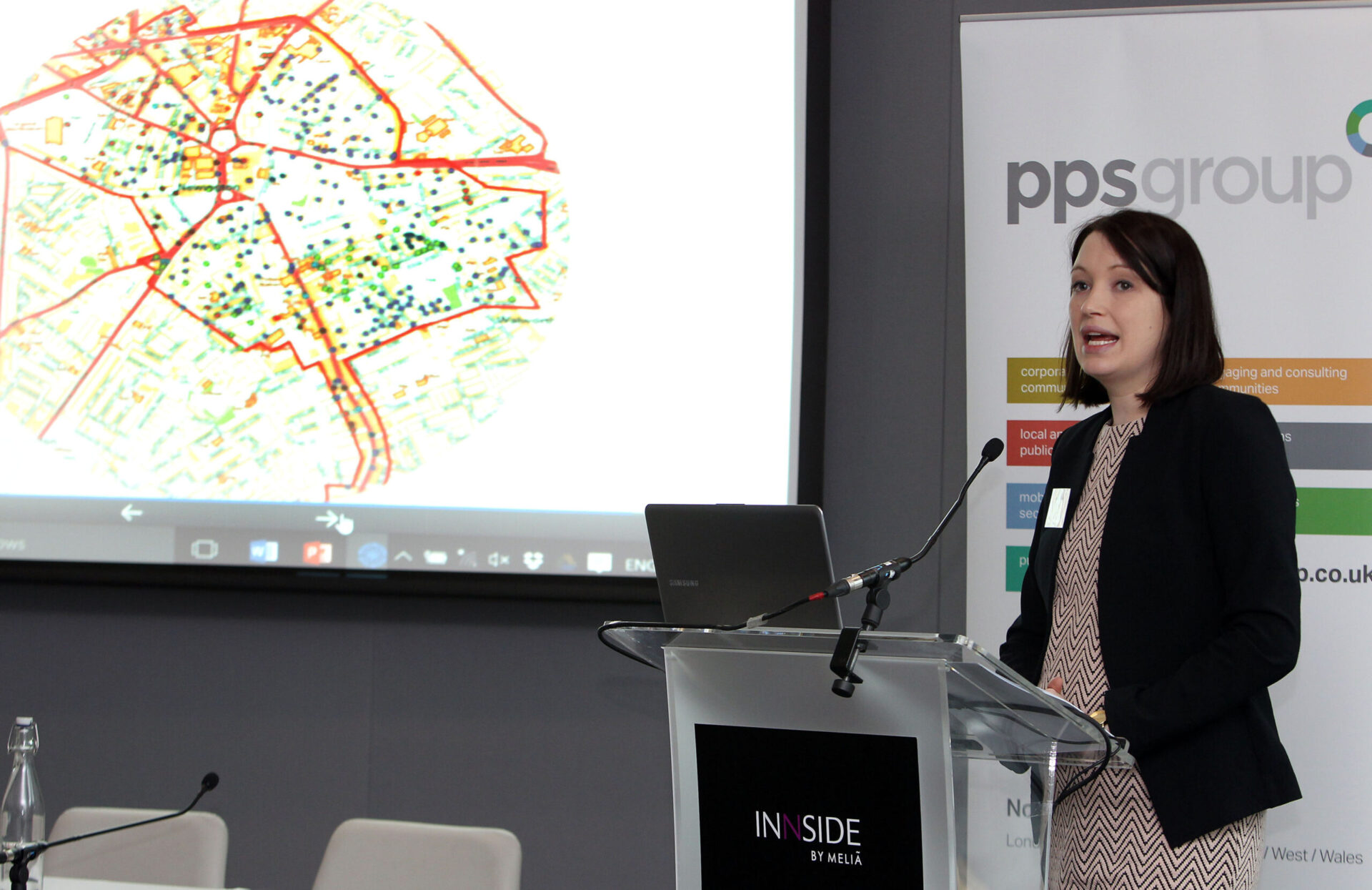
Rebecca Eatwell, deputy managing director, PPS Group
Eatwell highlighted key stats that came out of the recent PPS planning barometer, an annual survey of all 4,200 planning committees.
For 70% of councillors, the provision of affordable homes for future generations was a top priority, followed by the growth of town centres, and then job creation.
Around 28% said they wouldn’t rule out a green belt review, while 42% said it would depend on circumstances of the borough.
“However, councillors may not publicly promote green belt release, even if they do respond positively in a survey,” Eatwell warned.
In a disheartening statistic for developers, less than 10% of respondents reported that they encouraged meetings between developers and committee members prior to a planning application.
Around 48% thought that the Government aim to secure planning permission on 90% of brownfield land was not achievable in their authority, and neighbourhood plans also did not fair positively, with 50% skeptical about the level of scrutiny the plans had been subjected to.
As a specialist in public consultations for developments, Eatwell said that while nationally support for housebuilding had improved at a local level, that support rarely showed itself at a local level.
“A vocal minority always sways councilor opinion,” she said. “However we’re finding that a message that does play well is ‘providing homes for the future generations, allowing families to stay together’.
“In a public consultation, it’s easy to spend time on the minority that lives the closest, but you can reach out to the silent majority by creating a buzz around development, and encouraging people to debate what they want for their area.”
Get real
Lee of NJL Consulting was blunt when it came to the topic of housing shortages, discussing figures which show that only 35% of 25-34 year olds are homeowners, and that there are 1.4m people on the social housing waiting list.
“Look at the statistics of the amount of people living at home, or on the social housing waiting list. Anyone who thinks there isn’t a housing crisis, needs to get real,” he said.
He gave an overview of the history of housebuilding in the last 50 years in Britain, showing how it was affected by changes in Government.
“In the 1960s, 400,000 units were being built each year. When Labour was in power more houses got built, or at least social ones did, and when Tories were in power we built less. Then with right to buy, social housing went right off the radar.”
Ever since, councils struggled to take ownership of the delivery of new housing.
“It’s planning versus delivery,” said Lee. “We get a timid response from councils when pushing for delivery, and are faced with a ‘it’s not our fault they don’t get built’ attitude.
“Every planning officer should understand what they need to achieve in the bigger picture, and how their area works within the Northern Powerhouse agenda. There needs to be more imagination to use the planning system to secure funding, and councils and developers need to work together to create delivery teams.
“Devolution will help, but it takes time,” he said. “The UK is in the most divided circumstances we have been in for years. Older homeowners who benefited from the boom, need to support younger people who need housing, and hopefully we will end up with a more balanced society.”
Must try harder
Sam Stafford, director at housebuilder Barratt, took to the stand to give the builder’s perspective on housing delivery. Like Eatwell, he stressed that planning discussions could not be separated from politics.

Sam Stafford with Cllr Sean Anstee and Cllr Sue Derbyshire on the second panel of the day
“The situation we are in now, because of choices by consecutive governments, is that as a country where we spend more on housing benefit than on housebuilding. Even initiatives that have encouraged building, such as Help to Buy, cutting social rent, starter homes, all serve the same market,” Stafford said, pointing to recent research from Savills.
“The question is, does the Government actually want to build more homes? The Government target of 1 million homes by 2020 is still not enough, and even that target is hard to achieve.”
While in the North West house prices had seen a rise of 5.4% in the last year, it was still below the 17% peak reached prior to the recession. While supply was limited, large housebuilders were also experiencing difficulties in delivering in large quantities.
“There’s a trend towards fewer permissions on larger sites, as the housing market is just not conducive for larger rates of construction,” Stafford said. “10 small builders on 10 smaller sites, developed in stages, will sell more than Barratt on 100 homes.”
Like Lee and Derbyshire, Stafford highlighted that even the homes currently under construction only addressed need in one section of society.
“About 98% of homes in Salford built between 2001-07 were flats. We’re not building the right homes.”
Barratt is part of the Housing the Powerhouse campaign, which is currently lobbying Greater Manchester to increase the housebuilding and employment targets within the GM Spatial Framework to 16,000 units each year, or risk a shortfall of 64,000 homes in the next 20 years.
When the speakers all took part in a panel discussion, Stafford challenged the view that the housing delivery figures currently shown in the developing GM Spatial Framework were enough to reflect the ambition of the city region.
In response, Cllr Derbyshire said: “We believe the framework is ambitious enough. We started initial work on the research the week before the devolution agreement, and at the time following a consultation the initial targets were lower. Now the report includes the figure mentioned by Housing the Powerhouse, is included in the consultation. The time to see if we have enough ambition is when we’ve produced the draft plan. Three options have been presented, which all show a point along a spectrum.”
While many, Stafford included, advocated a green belt review in order to increase available land, he admitted that he would be “astounded if over this parliament and the next public opinion sways the Government to launch a green belt review. It’d be easier to bring privatization to the NHS that bring about the green belt review, it’s the sacred cow.”
No Northern Whitehall
Cllr Sean Anstee, leader of Trafford Council, laid out Greater Manchester’s ambition as part of ongoing devolution discussions, and his hopes for Trafford’s role within the Spatial Framework and Northern Powerhouse.

Cllr Sean Anstee, leader of Trafford Council
“We’re getting to the stage where we’re putting teeth to the Northern Powerhouse, a concept which is largely supported. Delivering sustainable communities is key.
“Trafford is pro-growth and pro-business, and plans to be the most economically successful and most prosperous part of Greater Manchester,” he said.
“For the first time in the long time we are able to have a joined up conversation about planning and infrastructure alongside transport, jobs, skills, health and social care,” said Anstee. “Through no fault of its own the Government is not able to do that, it’s too big, it doesn’t understand, it works in silos. As we work through our devolution agreement in Greater Manchester, we’re being very cautious not to create a Whitehall of the North, because if we do that we will have failed.”
Anstee predicted that with unification across key leaders, and an increase in investment from overseas, the North would develop the same “critical mass” as the capital.
“In the same way that we are coalescing in one voice for transport, we need to be able to do that for our key sectors, and to look at those sectors that are pan-Northern, and globally significant, to attract investors in. We are not just talking about Northern Powerhouse as a concept, but as an economy.
“There will be a point, which happened a few years ago, when London became unstoppable, and we need to get to a point where the Northern Powerhouse becomes unstoppable. It’s about that critical mass, through which we can achieve our ambitions.”
- To view presentations delivered by Anderson, Lee and Stafford at Place RESI visit Slideshare, and for PPS Group’s Eatwell go to Prezi
Click any image below to launch gallery
- Cllr Sue Derbyshire, leader of Stockport Council and chairman of the housing and planning commission at the Greater Manchester Combined Authority
- Rebecca Eatwell, deputy managing director, PPS Group
- Sam Stafford, strategic land director, Barratt Developments
- Grant Anderson, head of planning, Hill Dickinson
- Nick Lee, managing director, NJL Consulting
- Paul Unger, editor of Place North West, chaired the panel
- Sam Stafford with Cllr Sean Anstee and Cllr Sue Derbyshire on the second panel of the day
- Nick Lee of NJL Consulting, Grant Anderson of Hill DIckinson and Rebecca Eatwell of PPS Group on the first panel


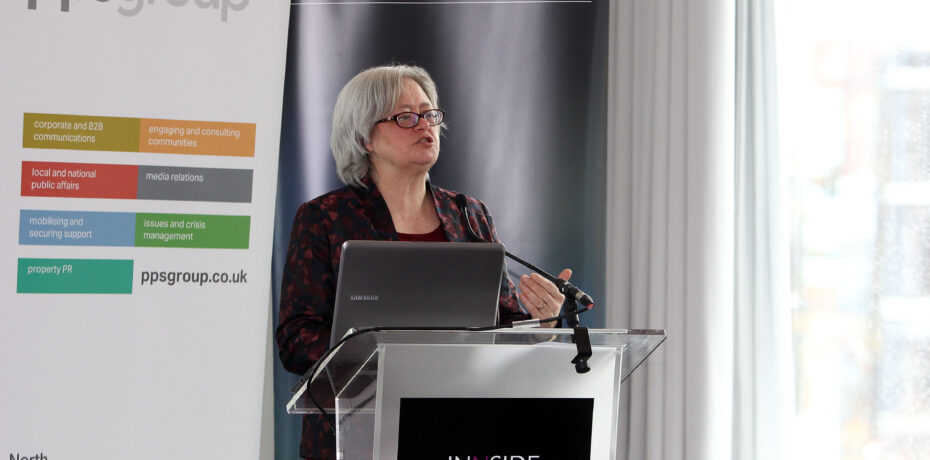
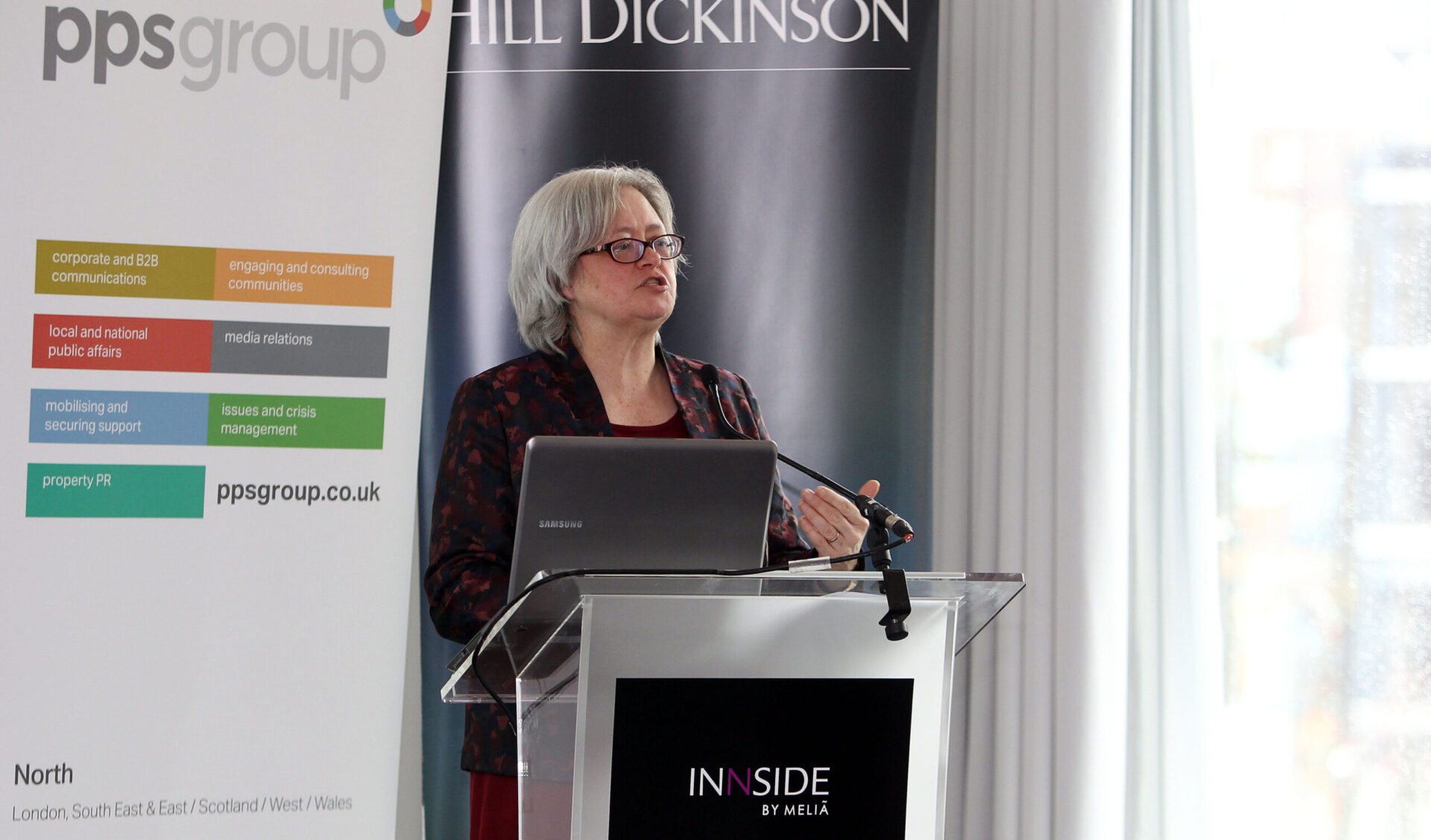
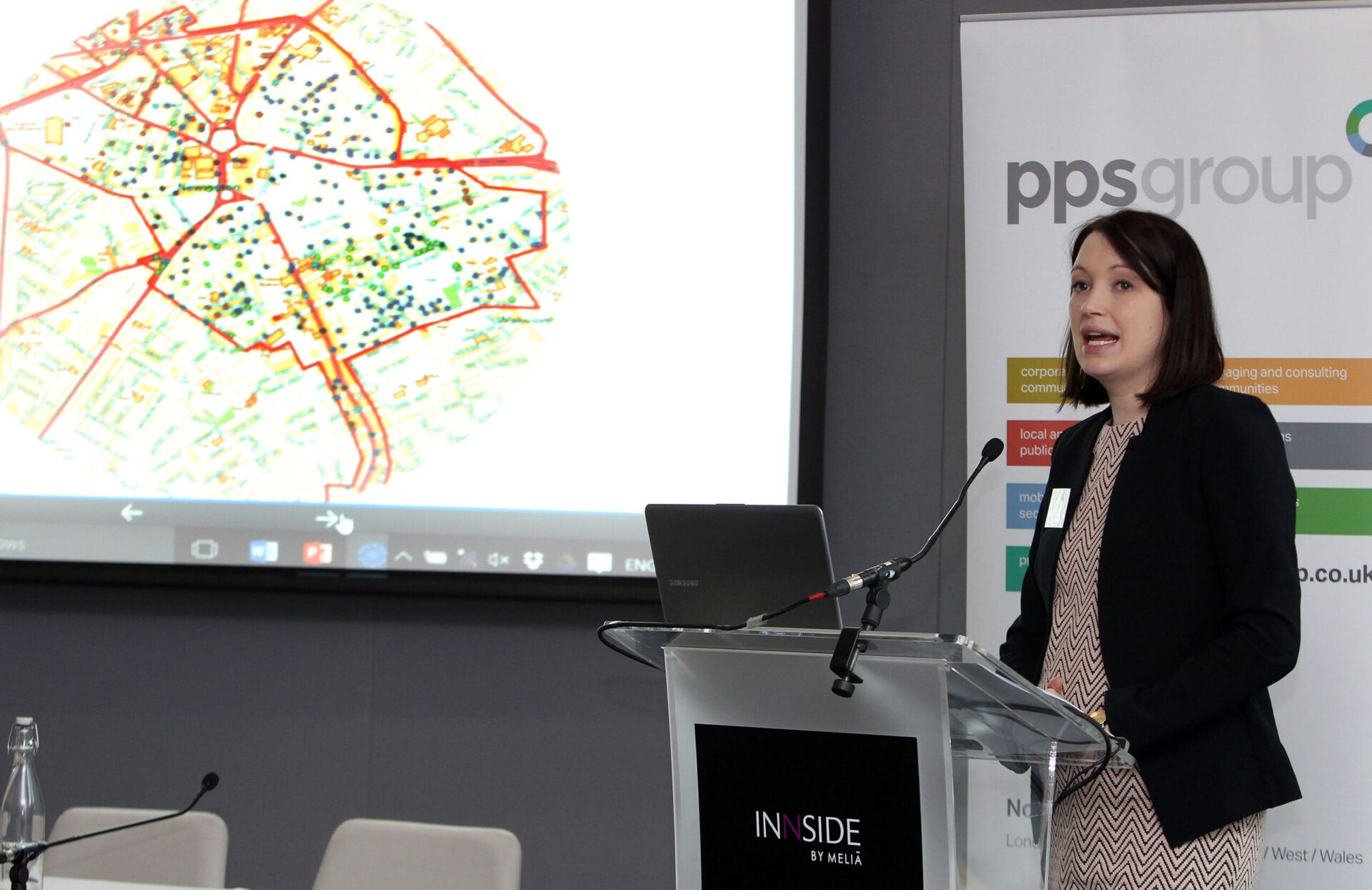





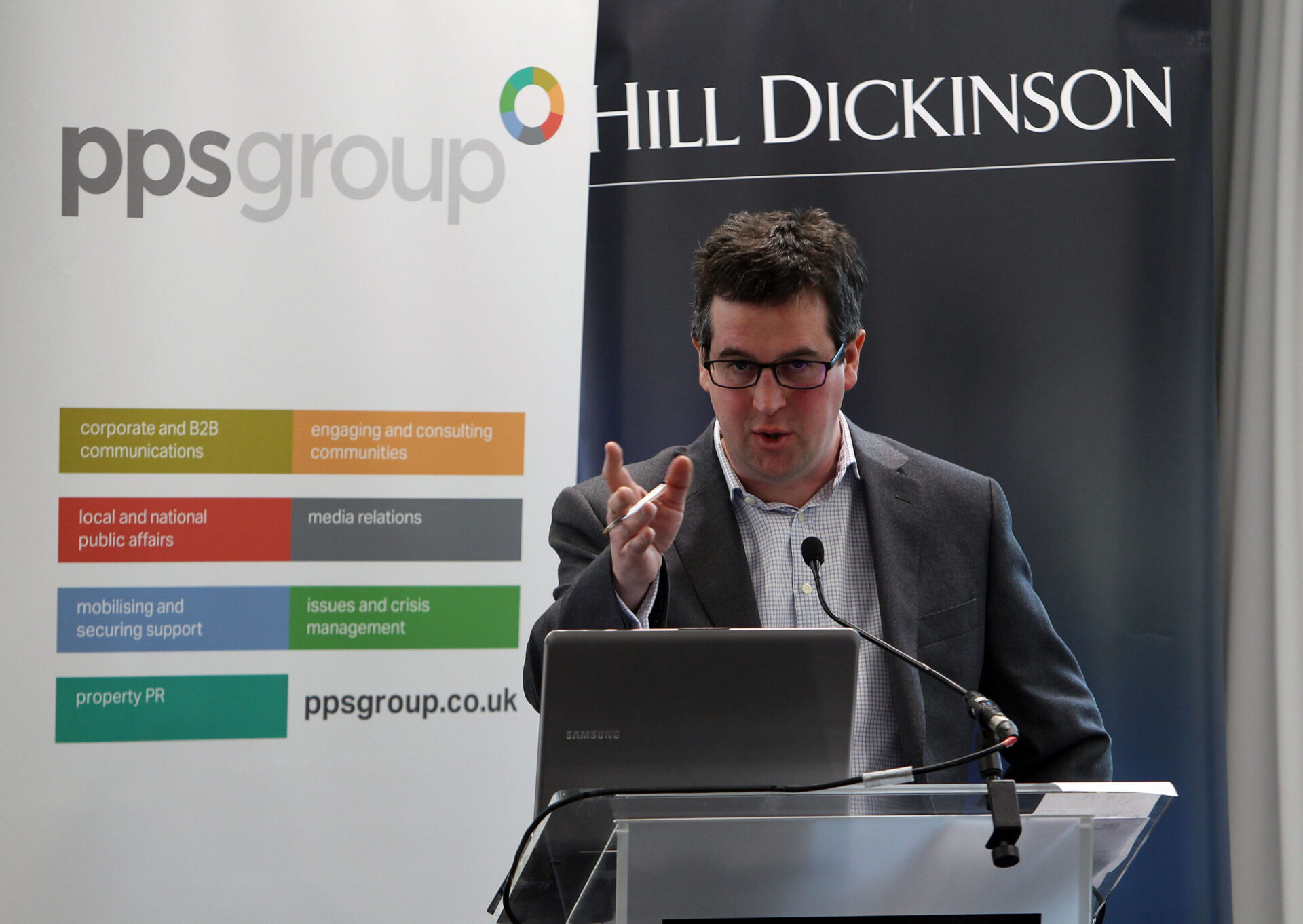














Isn’t “ambitious enough” any oxymoron? 😉
By Observer
Why has all the money with the exception of a paltry £1 million for a scheme in Oldham and a project in Altrincham all gone within spitting distance of Central Manchester. Is this the shape of things to come with Devolution? Are we going to see a localised version of Britain in general,where Manchester gets all the hand outs as in London? Whilst everywhere else in the devolved area gets a few crumbs? This housing budget was for Greater Manchester,not Trinity Way and Deansgate.
By Elephant
Not a single mention of place making? We need to drop this old fashioned, facile notion of ‘planning vs delivery’ and understand that planning can be the most powerful enabler of delivery out there.
If house builders and their consultants worked more collaboratively with local authorities and developed long term, detailed plans for new places, including the essential infrastructure, we create places that people want to live in and see as an asset to existing settlements. Opposition would melt away. Unfortunately, most house builders are hideously short termist and their standardised product and delivery model incapable of taking a long term view. No wonder people object to the resultant identikit sprawl and overburdened infrastructure – no amount of marketing “buzz” can overcome this.
The answer to the housing crisis is a combination of ramping up the involvement of smaller developers, employ delivery models that capture planning gain to fund affordable housing and other infrastructure, use gap funding on high quality infrastructure rather than closing the viability gap on low quality sprawl, and focus on place making rather than sterile numbers. The key to all this requires local authorities or a more innovative breed of developer to take a lead on land assembly and take a long term view on generating value through creating places of genuine quality and character that enhance the neighbourhood, town or city in which they sit.
Rather than ‘planning vs delivery’ the real conflict underpinning the lack of supply is ‘estates vs places’ or ‘short term vs long term’.
By PNW reader